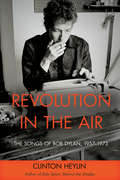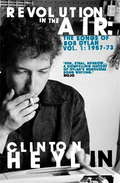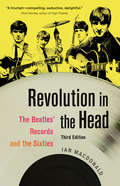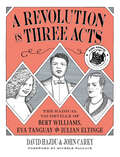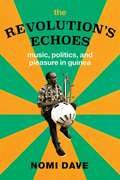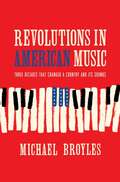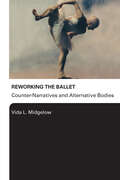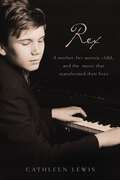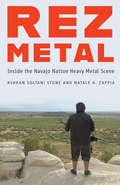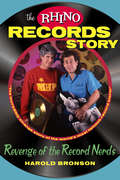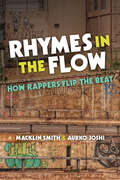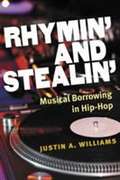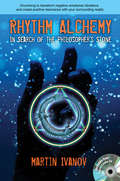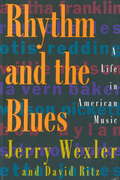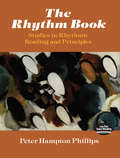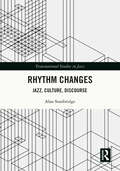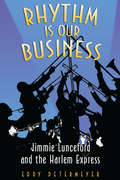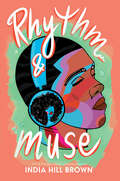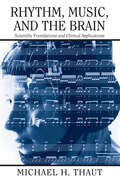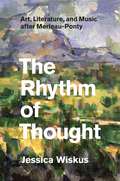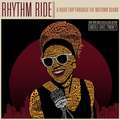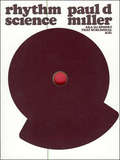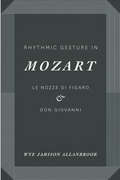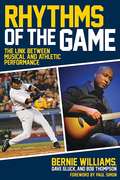- Table View
- List View
Revolution in the Air: The Songs of Bob Dylan, 1957–1973
by Clinton HeylinBy far the most comprehensive book on Dylan's words ever written, including a number of songs that no one has ever heard, this first volume will fundamentally change how these lyrics are interpreted and understood. Arranged in a surprising chronology of when they were actually written rather than when they appeared on albums--the middle verse of "Blowin' in the Wind" was written much later than the first and third verses, and the songs on John Wesley Harding were written prior to some of the songs on The Basement Tapes--hundreds of surprising facts are uncovered in this catalog of 300 songs, spanning his career up prior to Blood on the Tracks. Newly discovered manuscripts, anecdotal evidence, and a seemingly limitless knowledge of every Bob Dylan live performance contribute to this definitive resource of the words of a celebrated American singer-songwriter.
Revolution in the Air: The Songs of Bob Dylan 1957-1973
by Clinton HeylinBob Dylan has always regarded himself as a songwriter: 'I am my words,' he wrote in 1964.Distilling a lifetime's passion and study, leading Dylan author, Clinton Heylin charts the development and first moments of genius of this unique artist whose songs changed the world.From his first attempts at writing, Song to Bridget, in 1957, (apparently for Brigitte Bardot) Bob Dylan always aspired to poetry, yet his role as a writer rather than a performer of his own songs is often overlooked. In over fifty years of creativity he had penned some of the most iconic, and perfect, songs in popular history. Arriving in New York in 1961, the city had an enormous impact on the young artist and, as he established himself amongst the folk clubs and artists, he would produce songs that spoke for a whole generation: Blowing in the Wind, A Hard Rain's Gonna Fall, The Times They Are a Changin', Like a Rolling Stone, and Forever Young.In Revolution in the Air Clinton Heylin recounts the story of each song as it is written, giving a full appreciation of the songs themselves as well as Dylan the emerging artist. Unlike any other book on Dylan, it charts his rise as a writer, where he gained his inspiration, the burst of energy which produced some of his most famous songs as well as the lesser known stories behind the more iconic verses.This is an essential book for anyone interested in Dylan and his place in literature. Informative, opinionated, packed with new insights and revelations, this is an instant classic.
Revolution in the Head: The Beatles' Records and the Sixties
by Ian MacdonaldThis "Bible of the Beatles" captures the iconic band's magical and mysterious journey from adorable teenagers to revered cultural emissaries. In this fully updated version, each of their 241 tracks is assessed chronologically from their first amateur recordings in 1957 to their final "reunion" recording in 1995. It also incorporates new information from the Anthology series and recent interviews with Paul McCartney. This comprehensive guide offers fascinating details about the Beatles' lives, music, and era, never losing sight of what made the band so important, unique, and enjoyable.
A Revolution in Three Acts: The Radical Vaudeville of Bert Williams, Eva Tanguay, and Julian Eltinge
by David Hajdu John CareyBert Williams—a Black man forced to perform in blackface who challenged the stereotypes of minstrelsy. Eva Tanguay—an entertainer with the signature song “I Don’t Care” who flouted the rules of propriety to redefine womanhood for the modern age. Julian Eltinge—a female impersonator who entranced and unnerved audiences by embodying the feminine ideal Tanguay rejected. At the turn of the twentieth century, they became three of the most provocative and popular performers in vaudeville, the form in which American mass entertainment first took shape.A Revolution in Three Acts explores how these vaudeville stars defied the standards of their time to change how their audiences thought about what it meant to be American, to be Black, to be a woman or a man. The writer David Hajdu and the artist John Carey collaborate in this work of graphic nonfiction, crafting powerful portrayals of Williams, Tanguay, and Eltinge to show how they transformed American culture. Hand-drawn images give vivid visual form to the lives and work of the book’s subjects and their world.This book is at once a deft telling of three intricately entwined stories, a lush evocation of a performance milieu with unabashed entertainment value, and an eye-opening account of a key moment in American cultural history with striking parallels to present-day questions of race, gender, and sexual identity.
The Revolution’s Echoes: Music, Politics, and Pleasure in Guinea (Chicago Studies in Ethnomusicology)
by Nomi DaveMusic has long been an avenue for protest, seen as a way to promote freedom and equality, instill hope, and fight for change. Popular music, in particular, is considered to be an effective form of subversion and resistance under oppressive circumstances. But, as Nomi Dave shows us in The Revolution’s Echoes, the opposite is also true: music can often support, rather than challenge, the powers that be. Dave introduces readers to the music supporting the authoritarian regime of former Guinean president Sékou Touré, and the musicians who, even long after his death, have continued to praise dictators and avoid dissent. Dave shows that this isn’t just the result of state manipulation; even in the absence of coercion, musicians and their audiences take real pleasure in musical praise of leaders. Time and again, whether in traditional music or in newer genres such as rap, Guinean musicians have celebrated state power and authority. With The Revolution’s Echoes, Dave insists that we must grapple with the uncomfortable truth that some forms of music choose to support authoritarianism, generating new pleasures and new politics in the process.
Revolutions in American Music: Three Decades That Changed a Country and Its Sounds
by Michael BroylesThe story of how unexpected connections between music, technology, and race across three tumultuous decades changed American culture. How did a European social dance craze become part of an American presidential election? Why did the recording industry become racially divided? Where did rock ’n’ roll really come from? And how do all these things continue to reverberate in today’s world? In Revolutions in American Music, award-winning author Michael Broyles shows the surprising ways in which three key decades—the 1840s, the 1920s, and the 1950s—shaped America’s musical future. Drawing connections between new styles of music like the minstrel show, jazz, and rock ’n’ roll, and emerging technologies like the locomotive, the first music recordings, and the transistor radio, Broyles argues that these decades fundamentally remade our cultural landscape in enduring ways. At the same time, these connections revealed racial fault lines running through the business of music, in an echo of American society as a whole. Through the music of each decade, we come to see anew the social, cultural, and political fabric of the time. Broyles combines broad historical perspective with an eye for the telling detail and presents a variety of characters to serve as focal points, including the original Jim Crow, a colorful Hungarian dancing master named Gabriel de Korponay, “Empress of the Blues” Bessie Smith, and the singer Johnnie Ray, whom Tony Bennett called “the father of rock ’n’ roll.” Their stories, and many others, animate Broyles’s masterly account of how American music became what it is today.
Reworking the Ballet: Counter Narratives and Alternative Bodies
by Vida L. MidgelowChallenging and unsettling their predecessors, modern choreographers such as Matthew Bourne, Mark Morris and Masaki Iwana have courted controversy and notoriety by reimagining the most canonical of Classical and Romantic ballets. In this book, Vida L. Midgelow illustrates the ways in which these contemporary reworkings destroy and recreate their source material, turning ballet from a classical performance to a vital exploration of gender, sexuality and cultural difference. Reworking the Ballet: Counter Narratives and Alternative Bodies articulates the ways that audiences and critics can experience these new versions, viewing them from both practical and theoretical perspectives, including: eroticism and the politics of touch performing gender cross-casting and cross-dressing reworkings and intertextuality cultural exchange and hybridity.
Rex: A Mother, Her Autistic Child, and the Music that Transformed Their Lives
by Cathleen Lewis<P>The inspiring story of Rex, a boy who is not only blind and autistic, but who also happens to be a musical savant. <P>How can an 11-year old boy hear a Mozart fantasy for the first time and play it back note-for-note perfectly-but struggle to navigate the familiar surroundings of his own home? <P>Cathleen Lewis says her son Rex's laugh of total abandon is the single most joyous sound anyone could hear, but his tortured aversion to touch and sound breaks her heart and makes her wonder what God could have had in mind. <P>In this book she shares the mystery of Rex and the highs, lows, hopes, dreams, joy, sorrows, and faith she has journeyed through with him.
Rez Metal: Inside the Navajo Nation Heavy Metal Scene
by Ashkan Soltani Stone Natale A. ZappiaRez Metal captures the creative energy of Indigenous youth culture in the twenty-first century. Bridging communities from disparate corners of Indian Country and across generations, heavy metal has touched a collective nerve on the Navajo Reservation in Arizona in particular. Many cultural leaders—including former Navajo president Russell Begaye—have begun to recognize heavy metal&’s ability to inspire Navajo communities facing chronic challenges such as poverty, depression, and addiction. Heavy metal music speaks to the frustrations, fears, trials, and hopes of living in Indian Country.Rez Metal highlights a seminal moment in Indigenous heavy metal: when Kyle Felter, lead singer of the Navajo heavy metal band I Dont Konform, sent a demo tape to Flemming Rasmussen, the Grammy Award–winning producer of several Metallica albums, including Master of Puppets. A few months later, Rasmussen, captivated by the music, flew from Denmark to Window Rock, Arizona, to meet the band. Through a series of vivid images and interviews focused on the venues, bands, and fans of the Navajo Nation metal scene, Rez Metal provides a window into this fascinating world.
The Rhino Records Story: Revenge of the Music Nerds
by Harold BronsonIn the 1970s in the backroom of a record store, Harold Bronson and Richard Foos were making history-and Rhino Records was born. Harold Bronson's The Rhino Records Story tells the tale of how a little record shop became a multi-million dollar corporation. Starting as an expression of Bronson and Foos' passion for rock music, absurdity, and an anti-establishment sensibility, Rhino soon outgrew its beginnings as a reissue label, taking on new artists and new mediums. Their accomplishments grew to encompass several gold record awards, the Best Label of the Year Award, the revival of careers of famous musicians, and the creation of a company to produce feature films including Fear and Loathing in Las Vegas. This behind-the-scenes look at a company considered by many to be the industry's best, reveals the secrets to their success. Written from the perspective of cofounder Harold Bronson, The Rhino Records Story divulges a unique business approach which made Rhino what it was at the height of its success. Woven throughout this story of a rising corporation, Bronson guides us through the ascent, fall, and revival of artists Rhino touched such as the Monkees, the Turtles, the Knack, and Frankie Lymon. In a mix of hard work, passion for music, and a flair for the unconventional, the story of Rhino Records takes shape. The owners also ran their company humanely, and were awarded the Clinton administration's only Corporate Citizenship Award given to an entertainment company. Rhino Records, as it was envisioned by Bronson and Foos, had higher priorities than the bottom line. Struggling against corporate interests, rock star personalities, and a perpetual underdog reputation, Bronson provides an exclusive insight into how the industry was run and how Rhino excelled. By the fans, for the fans, Rhino Records is the story of rock history, evolving pop culture, and a unique understanding of the music that mattered.
The Rhino Records Story: Revenge of the Music Nerds
by Harold BronsonIn the 1970s in the backroom of a record store, Harold Bronson and Richard Foos were making history-and so, Rhino Records was born. Harold Bronson's The Rhino Records Story tells the tale of how a little record shop became a multimillion dollar corporation. This behind-the-scenes look at a company considered by many to be the industry's best, reveals the secrets to their success. Written from the perspective of co-founder Harold Bronson, The Rhino Records Story divulges a unique business approach which made Rhino what it was at the height of its success. In a mix of hard work and good humor, the story of Rhino Records takes shape. Struggling against corporate interests, the demands of rock star personalities, and a perpetual underdog reputation, Bronson provides an exclusive insight into how Rhino excelled. By the fans, for the fans, Rhino Records is the story of rock history, evolving pop culture, and a unique understanding of the music that mattered.
Rhymes in the Flow: How Rappers Flip the Beat
by Macklin Smith Aurko JoshiDespite its global popularity, rap has received little scholarly attention in terms of its poetic features. Rhymes in the Flow systematically analyzes the poetics (rap beats, rhythms, rhymes, verse and song structures) of many notable rap songs to provide new insights on rap artistry and performance. Defining and describing the features of what rappers commonly call flow, the authors establish a theory of the rap line as they trace rap’s deepest roots and stylistic evolution—from Anglo-Saxon poetry to Lil Wayne—and contextualize its complex poetics. Rhymes in the Flow helps explain rap’s wide appeal by focusing primarily on its rhythmic and thematic power, while also claiming its historical, cultural, musical, and poetic importance.
Rhymin' and Stealin': Musical Borrowing in Hip-Hop
by Williams Justin A.Rhymin’ and Stealin’ begins with a crucial premise: the fundamental element of hip-hop culture and aesthetics is the overt use of preexisting material to new ends. Whether it is taking an old dance move for a breakdancing battle, using spray paint to create street art, quoting from a famous speech, or sampling a rapper or 1970s funk song, hip-hop aesthetics involve borrowing from the past. By appropriating and reappropriating these elements, they become transformed into something new, something different, something hip-hop. Rhymin’ and Stealin’ is the first book-length study of musical borrowing in hip-hop music, which not only includes digital sampling but also demonstrates a wider web of references and quotations within the hip-hop world. Examples from Nas, Jay-Z, A Tribe Called Quest, Eminem, and many others show that the transformation of preexisting material is the fundamental element of hip-hop aesthetics. Although all music genres use and adapt preexisting material in different ways, hip-hop music celebrates and flaunts its “open source” culture through highly varied means. It is this interest in the web of references, borrowed material, and digitally sampled sounds that forms the basis of this book—sampling and other types of borrowing becomes a framework with which to analyze hip-hop music and wider cultural trends.
Rhythm Alchemy
by Martin IvanovAccording to Socrates, humans have nothing more to learn because we already know everything we need to know. We have simply forgotten it. A true teacher is one who can help us to remember forgotten knowledge. The great Michelangelo perceived his unique creations in rough and uncultured stone blocks. He said that to see the finished sculpture, one only needs to eliminate the unnecessary particles and debris. Just like these stone blocks, we all possess hidden and forgotten wisdom. To live our true nature, we need to separate ourselves from our limited beliefs and understandings. This is the very essence of the book you have in your hands. #147;Rhythm Alchemy” is full of insights from ancient times and from our deepest self. The book synthesizes the ancient knowledge of numbers, the heartbeat, the rhythm of breathing and our personal situation within the bigger, universal vibrations, as well as our interactions with people and nature around us. #147;Rhythm Alchemy” offers invaluable knowledge about ourselves and the unique harmony between the human being, his or her inner world, his or her rhythm and the surrounding reality. We may not realize how often we use musical terms like rhythm, melody and harmony to refer to things which happen to us in our daily lives: the rhythm of our heart, how our feelings soar in space, the melody of our personal inner voice trying to interweave with the harmony of other voices around us. We are constantly seeking and wanting to write the composition of our "happiness". When we compose this work, even though we tirelessly seek inspiration from outside us, our score often stays blank. This is because we do not pay sufficient attention to the true inspiration which lies within us. In order to reach this inspiration, we need to rebuild the bridges linking us to the roots of our true nature #150; rhythm. When we begin the intimate dance with the vibrations of our existence and begin to experience the real flavor of each wave which colors our emotions, then we will attain the creative power of the composer expressed in what we call #147;happiness”. Martin Ivanov’s book "Rhythm Alchemy" provides us with the spiritual and physical parameters of our cosmic score. It will guide us to our place in the composition and provide us with the ideas and knowledge we need to participate fully in both #150; how to compose our life and fulfill our innermost dreams.
Rhythm And The Blues
by Jerry WexlerAtlantic Records partner and producer, Wexler presided over the evolution of the modern music business and made prodigious contributions through to our cultural history. Wexler has worked with the entire range of American genius: Ray Charles, Aretha Franklin, Otis Redding, Bob Dylan, Willie Nelson, and others. 75 photographs.
The Rhythm Book: Studies in Rhythmic Reading and Principles
by Peter PhillipsThis excellent textbook is directed to students and their teachers who want to further their mastery of rhythmic reading and notation. Through study of its principles, and through practice of the simple drills and exercises that occur throughout the book, readers can build the broad and fluent rhythmic vocabulary necessary for a good, basic understanding of music's essentials.Chapter by chapter, Peter Hampton Phillips, composer and educator, familiarizes the reader with the various signs, symbols, and units of rhythmic notation. For each area, he includes studies for playing and singing, and illuminating examples from nine centuries of music literature.The book includes a section on basic conducting technique and an appendix on sight-singing with drills that can enable singers and instrumentalists to "read ahead"; that is, to scan across the page, grasping new patterns as they appear. Other highly useful appendixes to this essential text demonstrate the principles of musical notation; illustrate a broad range of conducting patterns; list tempo markings in English, Italian, German, and French; and present typical problems and solutions of rhythmic notation.
Rhythm Changes: Jazz, Culture, Discourse
by Alan StanbridgeRhythm Changes: Jazz, Culture, Discourse explores the history and development of jazz, addressing the music, its makers, and its social and cultural contexts, as well as the various discourses – especially those of academic analysis and journalistic criticism – that have influenced its creation, interpretation, and reception. Tackling diverse issues, such as race, class, nationalism, authenticity, irony, parody, gender, art, commercialism, technology, and sound recording, the book’s perspective on artistic and cultural practices suggests new ways of thinking about jazz history. It challenges many established scholarly approaches in jazz research, providing a much-needed intervention in the current academic orthodoxies of Jazz Studies. Perhaps the most striking and distinctive aspect of the book is the extraordinary eclecticism of the wide-ranging but carefully chosen case studies and examples referenced throughout the text, from nineteenth century literature, through 1930s Broadway and film, to twentieth and twenty-first century jazz and popular music.
Rhythm is our Business: Jimmie Lunceford and the Harlem Express
by Eddy DetermeyerIn the 1930s, swing music reigned, and the Jimmie Lunceford Orchestra was the hottest and hippest attraction on the black dance circuits. Known for its impeccable appearance and infectious rhythms, Lunceford's group was able to out-swing and outdraw any band. For ten consecutive years, they were the best-loved attraction at Harlem's famed Apollo Theater. The group's hit recordings sold in the hundreds of thousands, and Jimmie Lunceford's band rivaled Ellington's for popularity in the African American community. Jimmie Lunceford was also an innovator, elevating big-band showmanship to an art and introducing such novel instruments as the electric guitar and bass. The band's arrangements, written by Sy Oliver, Edwin Wilcox, Gerald Wilson, Billy Moore, Jr., and Tadd Dameron, were daring and forward looking, influencing generations of big-band writers. Rhythm Is Our Business traces the development of the Jimmie Lunceford Orchestra from its infant days as a high school band in Memphis to its record-breaking tours across the United States, Canada, and Europe. The book also unveils Lunceford's romantic yet ill-fated involvement with Yolande Du Bois, daughter of famous writer and opinion leader W.E.B. Du Bois. And by reconstructing Lunceford's last day, the book offers a glimpse into the mysteries surrounding the leader's untimely death. This is essential reading for anyone interested in the history and legacy of swing.
Rhythm & Muse
by India Hill BrownCinderella meets Cyrano in this pitch-perfect YA rom-com that is a celebration of Black joy, first crushes, and putting your heart on the line for love. Darren Johnson lives in his head. There, he can pine for his crush—total dream girl, Delia Dawson—in peace, away from the unsolicited opinions of his talkative family and showboat friends. When Delia announces a theme song contest for her popular podcast, Dillie D in the Place to Be, Darren’s friends—convinced he’ll never make a move—submit one of his secret side projects for consideration.After the anonymous romantic verse catches Dillie’s ear, she sets out to uncover the mystery singer behind the track. Now Darren must decide: Is he ready to step out of the shadows and take the lead in his own life?
Rhythm, Music, and the Brain: Scientific Foundations and Clinical Applications
by Michael ThautWith the advent of modern cognitive neuroscience and new tools of studying the human brain "live," music as a highly complex, temporally ordered and rule-based sensory language quickly became a fascinating topic of study. The question of "how" music moves us, stimulates our thoughts, feelings, and kinesthetic sense, and how it can reach the human experience in profound ways is now measured with the advent of modern cognitive neuroscience. The goal of Rhythm, Music and the Brain is an attempt to bring the knowledge of the arts and the sciences and review our current state of study about the brain and music, specifically rhythm. The author provides a thorough examination of the current state of research, including the biomedical applications of neurological music therapy in sensorimotor speech and cognitive rehabilitation. This book will be of interest for the lay and professional reader in the sciences and arts as well as the professionals in the fields of neuroscientific research, medicine, and rehabilitation.
The Rhythm of Thought: Art, Literature, and Music after Merleau-Ponty
by Jessica WiskusBetween present and past, visible and invisible, and sensation and idea, there is resonance--so philosopher Maurice Merleau-Ponty argued and so Jessica Wiskus explores in The Rhythm of Thought. Holding the poetry of Stéphane Mallarmé, the paintings of Paul Cézanne, the prose of Marcel Proust, and the music of Claude Debussy under Merleau-Ponty's phenomenological light, she offers innovative interpretations of some of these artists' masterworks, in turn articulating a new perspective on Merleau-Ponty's philosophy. More than merely recovering Merleau-Ponty's thought, Wiskus thinks according to it. First examining these artists in relation to noncoincidence--as silence in poetry, depth in painting, memory in literature, and rhythm in music--she moves through an array of their artworks toward some of Merleau-Ponty's most exciting themes: our bodily relationship to the world and the dynamic process of expression. She closes with an examination of synesthesia as an intertwining of internal and external realms and a call, finally, for philosophical inquiry as a mode of artistic expression. Structured like a piece of music itself, The Rhythm of Thought offers new contexts in which to approach art, philosophy, and the resonance between them.
Rhythm Ride: A Road Trip Through the Motown Sound
by Andrea Davis Pickney<p>From award-winning author Andrea Davis Pinkney comes the story of the music that defined a generation and a movement that changed the world. <p>Berry Gordy began Motown in 1959 with an $800 loan from his family. He converted the garage of a residential house into a studio and recruited teenagers from the neighborhood-like Smokey Robinson, Mary Wells, Marvin Gaye, Stevie Wonder, and Diana Ross-to sing for his new label. Meanwhile, the country was on the brink of a cultural revolution, and one of the most powerful agents of change in the following decade would be this group of young black performers from urban Detroit. From Berry Gordy and his remarkable vision to the Civil Rights movement, from the behind-the-scenes musicians, choreographers, and song writers to the most famous recording artists of the century, Andrea Davis Pinkney takes readers on a Rhythm Ride through the story of Motown.</p>
Rhythm Science (Mediaworks Pamphlets)
by Paul D. MillerThe art of the mix creates a new language of creativity."Once you get into the flow of things, you're always haunted by the way that things could have turned out. This outcome, that conclusion. You get my drift. The uncertainty is what holds the story together, and that's what I'm going to talk about."—Rhythm ScienceThe conceptual artist Paul Miller, also known as Dj Spooky that Subliminal Kid, delivers a manifesto for rhythm science—the creation of art from the flow of patterns in sound and culture, "the changing same." Taking the Dj's mix as template, he describes how the artist, navigating the innumerable ways to arrange the mix of cultural ideas and objects that bombard us, uses technology and art to create something new and expressive and endlessly variable. Technology provides the method and model; information on the web, like the elements of a mix, doesn't stay in one place. And technology is the medium, bridging the artist's consciousness and the outside world.Miller constructed his Dj Spooky persona ("spooky" from the eerie sounds of hip-hop, techno, ambient, and the other music that he plays) as a conceptual art project, but then came to see it as the opportunity for "coding a generative syntax for new languages of creativity." For example: "Start with the inspiration of George Herriman's Krazy Kat comic strip. Make a track invoking his absurd landscapes...What do tons and tons of air pressure moving in the atmosphere sound like? Make music that acts a metaphor for that kind of immersion or density." Or, for an online "remix" of two works by Marcel Duchamp: "I took a lot of his material written on music and flipped it into a DJ mix of his visual material—with him rhyming!" Tracing the genealogy of rhythm science, Miller cites sources and influences as varied as Ralph Waldo Emerson ("all minds quote"), Grandmaster Flash, W. E. B Dubois, James Joyce, and Eminem. "The story unfolds while the fragments coalesce," he writes. Miller's textual provocations are designed for maximum visual and tactile seduction by the international studio COMA (Cornelia Blatter and Marcel Hermans). They sustain the book's motifs of recontextualizing and relayering, texts and images bleed through from page to page, creating what amount to 2.5 dimensional vectors. From its remarkable velvet flesh cover, to the die cut hole through the center of the book, which reveals the colored nub holding in place the included audio CD, Rhythm Science: Excerpts and Allegories from the Sub Rosa Archives, this pamphlet truly lives up to Editorial Director Peter Lunenfeld's claim that the Mediawork Pamphlets are "theoretical fetish objects...'zines for grown-ups."
Rhythmic Gesture in Mozart: Le Nozze di Figaro and Don Giovanni
by Wye Jamison AllanbrookWye Jamison Allanbrook’s widely influential Rhythmic Gesture in Mozart challenges the view that Wolfgang Amadeus Mozart’s music was a “pure play” of key and theme, more abstract than that of his predecessors. Allanbrook’s innovative work shows that Mozart used a vocabulary of symbolic gestures and musical rhythms to reveal the nature of his characters and their interrelations. The dance rhythms and meters that pervade his operas conveyed very specific meanings to the audiences of the day.
Rhythms Of The Game: The Link Between Musical and Athletic Performance
by Bernie Williams Bob Thompson Dave GluckBernie Williams' ability to play major league baseball at a high level was directly influenced by his musical training and his deep understanding of the similarities between musical artistry and athletic performance. Through a series of conversations, narratives, and sidebars, the authors (Bernie Williams, Dave Gluck, and Bob Thompson) discover and reveal the influence of music and its rhythms on the game of baseball. Readers of Rhythms of the Game will gain an insight into the similarities between musical artistry and athletic performance. The book is written for musicians and athletes looking to improve their level of performance on the stage or on the field, as well as for a general audience interested in gaining a deeper understanding of the underlying influence of music on the game of baseball.
